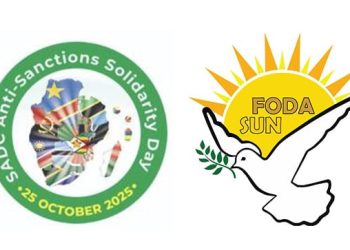Dr. Seyed Mohammad Sadati Nejad
Younes Koulivand
The Islamic Revolution of Iran and the ideas of Imam Khomeini and the Supreme Leader, Seyed Ali Khamenei, as two jurists and leaders of the Islamic Revolution have led to significant developments in terms of meaning and content in position of Iranian women in the post-Islamic revolution. The importance of the Iranian women in the post-Islamic revolution is that she has maintained all of these progresses by maintaining her originality and values without resorting to alienation and renunciation of Islamic values. Something that no other Islamic countries has reached this degree of glory and progress.
These days, by promoting the culture of liberalism whereas women have achieved some degree of growth, development and social, political, economic, and cultural opportunities in many countries around the world, but at the same degree or more by being as a sex product caused the destruction of countless social values. According to the lessons of Islamic Revolutionary Ideology, women should be present in society, and the presence of them in different arenas was one of the key factors in success of Islamic Revolution. Islamic Revolution has stabilized active presence of women in society by valorizing them, and today we witness that Iranian women, along with maintaining their hijab and Islamic values, achieved unprecedented success in various arenas of science, sports, politics, culture and society. This is a very important and valuable achievement for Islamic Revolution and Iranian women.
Now, we want to examine the status of Iranian women in society through a brief look at the statistics, based on elements of development and progress before and after Islamic Revolution.
Women’s Literacy Rate
According to the census of 1976, the population aged 15 years and over was about 18.7 million, distributed in equal proportions between men and women, as well as cities and villages. In the same year, the female population was 9.2 million and the number of literates was 2.2 million, representing 24 percent of the literacy rate of women. In this year the literacy rate of women was 61% in the world. But according to a report on literacy rates for women over 15 years, compiled in 2015 by United Nations, UNESCO, and UIS Institute of Statistics, it has reached 82.5 percent, almost equal to the worldwide literacy rate of women (82 percent). Also in area of educational justice, the results of the census, conducted in 1955-1957, show that the difference in literacy rate between men and women has decreased from 23.4% in 1976 to about 6.8% in 2016.
Also the number of female graduates has increased from 6% to 45% in 1978, and currently, 22.7% of Iranian women are highly educated. Also, you witness 45 percent increase in female graduates and 17-times increase in the number of faculty members in universities compared to pre Islamic Revolution while only 1.4% of faculty members in 1978, and 24% in 2017 were female. (Mehdi Nejad: Interview with Mizan) These statistics illustrate well that the growth of Iranian women during Islamic Revolution, not only did not stop, but also has been moving forward in a comprehensive and were advancing in all ways.
Life expectancy rates
According to World Bank statistics, following the socio-economic development programs and planning to achieve the Millennium Development Goals (MDGs), the country’s health and health indicators have improved and also many activities have been undertaken to reduce the chances of women and mothers` death and fortunately, have good results. In 1978, the life expectancy rate for women was 56.2%, but in 2011, with 20% growth, it reached almost 75.5%.
Employment
No precise statistics can be provided about women’s employment before 1956. Based on results of the first census of population and housing in this year, it was found that only 9.7% of total number of employed people were women, but during the years 1966 and 1976 the number of employed women increased, from 9.7% to 13.26% and then It reached 13.77% in last years of Pahlavi regime. In 1976-2006, the growth rate of women’s activity was 44.62 %, and the average of employment rate for women in the service sectors also increased from 46.18% in 1976 to 2005. The numbers of statistics definitely have grown more in recent years.
Women in Politics and Civic Activities
In Pahlavi regime, a wave of modernism began. While, it resulted in further presence of women in society, the movement, which was in line with Western culture and mainstream international culture, lacked originality. It had been intended by foreign powers (in order to change Iranian society’s culture from Islamic to western) and incompetent local authorities (to help accelerate the spread of Western culture). And also on the other side of these negative developments, status of women was abused and brothels and other negative values promoted in Islamic society. In spite of all these, women were not allowed to vote in Reza Khan Era until 1962. Today, we witness that women are present in social responsibilities such as representation in parliament, city councils, and sensitive government jobs, in addition to protecting their status. This process is steadily progressing, though slightly slow. Fortunately, Iranian women enjoy continuous necessary education and conquer serious social arenas day by day. For instance, the rise in female councilors was 79.76% in 1997-2003 that shows the role of women in social arenas.
According to the statistics mentioned above, you can definitely say that the Islamic Revolution has managed to preserve Islamic values, remove barriers to women’s presence in society and, consequently, create a more dynamic and efficient society than the Pahlavi era and even similar Islamic countries, which have followed the culture of liberalism. it should be believed that the Islamic Revolution introduced a new conceptual model of women`s presence in society in modern era. The evidence and facts of Islamic Revolution confirm that there is also a new structure and model, which has gradually indicated that it is more complete, comprehensive and humane than the Western one, for the presence of women in society. Because in model of Islamic Revolution, Iranian and Muslim women are present in society and not only have maintained their Islamic and Oriental values, but also achieved remarkable successes. Prior to that, it was said that if a woman wanted to be successful and be present in society, she would have to follow the Western approach. The Islamic Republic has introduced a new model of female presence in various social arenas.





